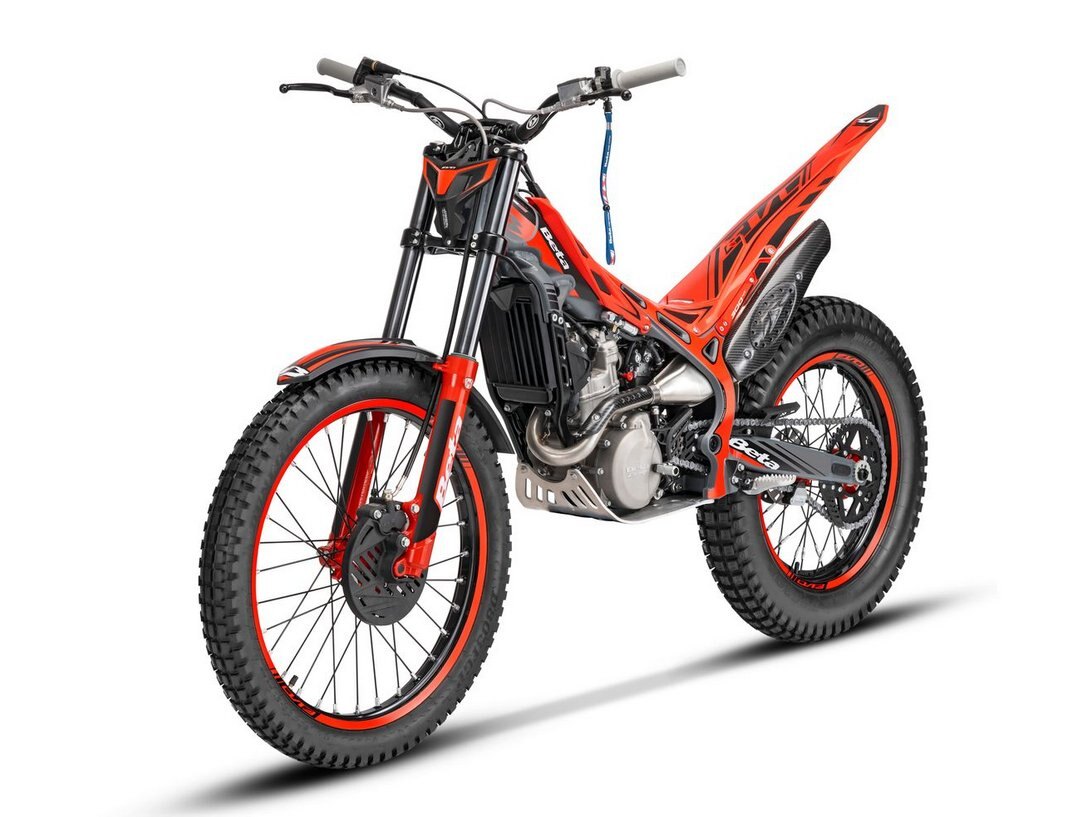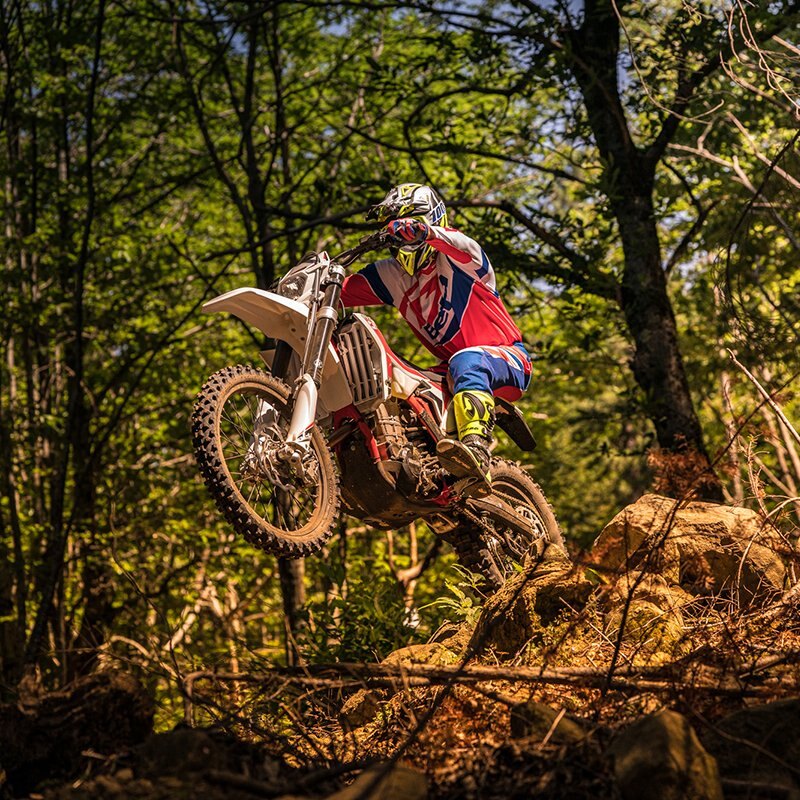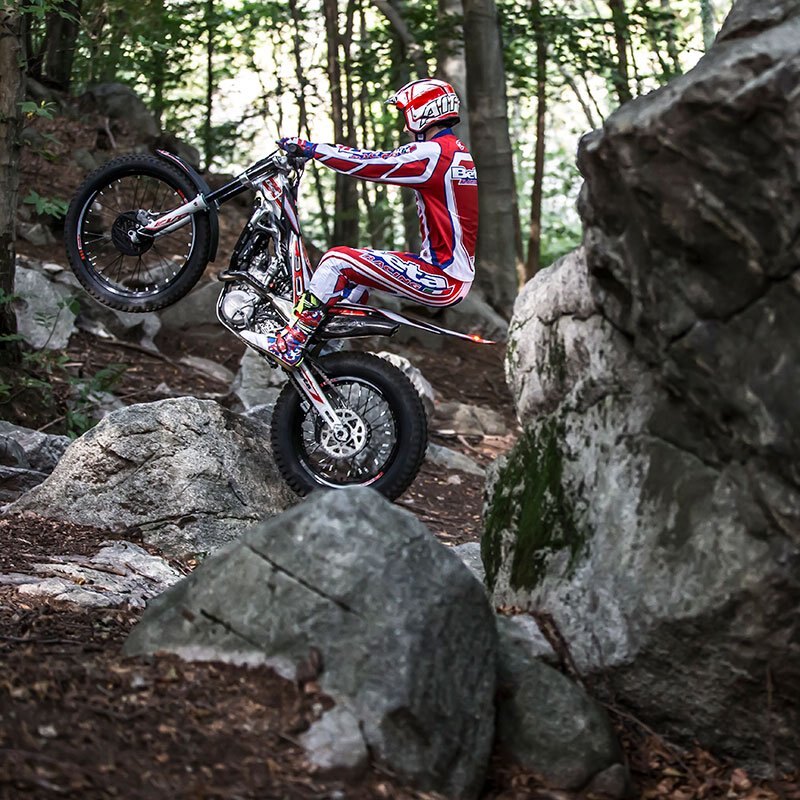












2025 Beta EVO 4T 300cc
| Beta is launching the new EVO My 2025 with a continued development that has helped the EVO line in becoming the best-selling trials model in the world. Beta engineers have continued the development of the EVO range for My 2025 with an all-new suspension package that improves the overall balance and rideability of the line. The EVO range is one of the most extensive and continues to offer a total of six different models, each with its own character and able to meet the needs of all riders, raising the potential and level of enjoyment that each experiences. Proof is the significant presence of EVO models in the paddocks of every form of racing. |
| The 4-stroke model also boasts an engine capacity of 300 cc, and strikes the perfect balance between performance, tractable engine power and overall usability. This engine embraces a completely different approach to riding than its 2-stroke siblings. With plenty of torque and linear, extremely progressive power delivery, this is the perfect bike for the amateur looking for a machine suitable for less challenging competitive use and motorcycle mounting climbing. |
|
Suspension: The EVO MY 2025 fork features a new look with Ø39 mm tubes, 1 mm larger than the previous model. Produced by Ollé, the new fork provides an increase in the torsional rigidity at the front wheel, improving the precision and ease of the bike's ride. Its operation is asymmetrical, with the right stanchion containing the fork spring which allows the fork to react quicker over the rocks and other section hazards. The spring preload can be adjusted as well to suit the rider’s needs. The other fork leg contains an all-new inner cartridge that is 2mm larger than the previous model. This new system can be adjusted as well to control the oil flow through the valving. The combination allows riders to fine-tune their front fork depending on conditions. The adoption of all the most recent new additions to the preceding Model Years are also confirmed. •
Electronic key: The key is composed of two parts: one part remains fastened to the bike's handlebars, while the other is magnetic (worn by the rider with a cord around their wrist), activating a mechanism in the event they are disconnected, functioning as a “Kill-Switch”. |






 Beta Motorcycles Imports Canada Ltd.
Beta Motorcycles Imports Canada Ltd.